Kai Sebek
Year of birth: 1997.
Where do you live: Currently I live in a Prague, capital city of Czech Republic.
Your discipline: Well, as for my work and passion, very strict and hard. Maybe too much so, but I struggle with ADHD and have not been able to function without discipline and a system in the past. At the same time, I’m quite the workaholic, but that’s only because I really love what I get to do. If I don’t enjoy something, I don’t do it at all. If I’m passionate about it, I do it 24/7. Kind of nothing in between. That doesn’t mean it’s healthy or sustainable in the long run haha, I’ve been trying to find more balance in the last few years. But discipline and structure in my work keeps me motivated and that’s what matters.
Website | Instagram
Your project “Woven Worlds” integrates real landscapes with fantastical illustrated creatures. How did you come up with the idea of combining photography and illustration in this way?
I feel like it happened kind of naturally. I’ve been doing a lot of documentary photography in the past and I’ve been drawing pretty much since ever. If we’re talking exclusively about photography, I’ve always been particularly fascinated by the ability to freeze the present moment, something that will never happen again. Around the age 15, I fell into documentary photography and sought out these moments especially among people – the grimaces, the tension, the gestures, the coincidences, the emotions captured right on the street. My greatest heroes have always been among photographers, and I also consider that medium the best option to convey information in the world in a way that is easily understood by all audiences.
So my path went in that direction at some point, but unfortunately when I started studying photography at art college, all that passion disappeared for a moment… I didn’t make the best choice at the time, but that doesn’t mean the school was bad. It just wasn’t for me. I dropped out of school and started to pursue illustration and drawing full time, and discovered another medium that I started to enjoy – tattooing.
Paradoxically, everything I have drawn since I was a child has always been at odds with reality. My illustrations revolved around the world of fantasy, and maybe because reality was quite stifling at the time, it was my safe place and a momentary escape for me. In fact, I was always bouncing back and forth between the two worlds and when reality got too much for me, especially in my childhood, I would escape into the imaginary one where there were no rules and I could really “play”. I think every child has this kind of escapism and I was just capturing it in progress on paper. That’s how the first fictional characters began to have “substance” and basically the whole core of Woven Worlds was born, although I had no idea at the time what it would eventually become.
I didn’t touch a camera for four years after I left school, but the more I travelled and explored the world around us, the more I began to realise how much it had in common with the one I had carried around in my head since I was a little girl.
The turning point came when I found out that maybe I was living in that fantasy world of my dreams, I just needed to change my point of view and learn to “play” again. That was the moment I picked up the camera again and everything became clear. Capturing that beautiful reality was not just an option in the form of an illustration. I wanted to make it obvious at a glance that the landscape really existed.
So my two passions (actually three, including the adventurous one) merged and Woven Worlds began to emerge.
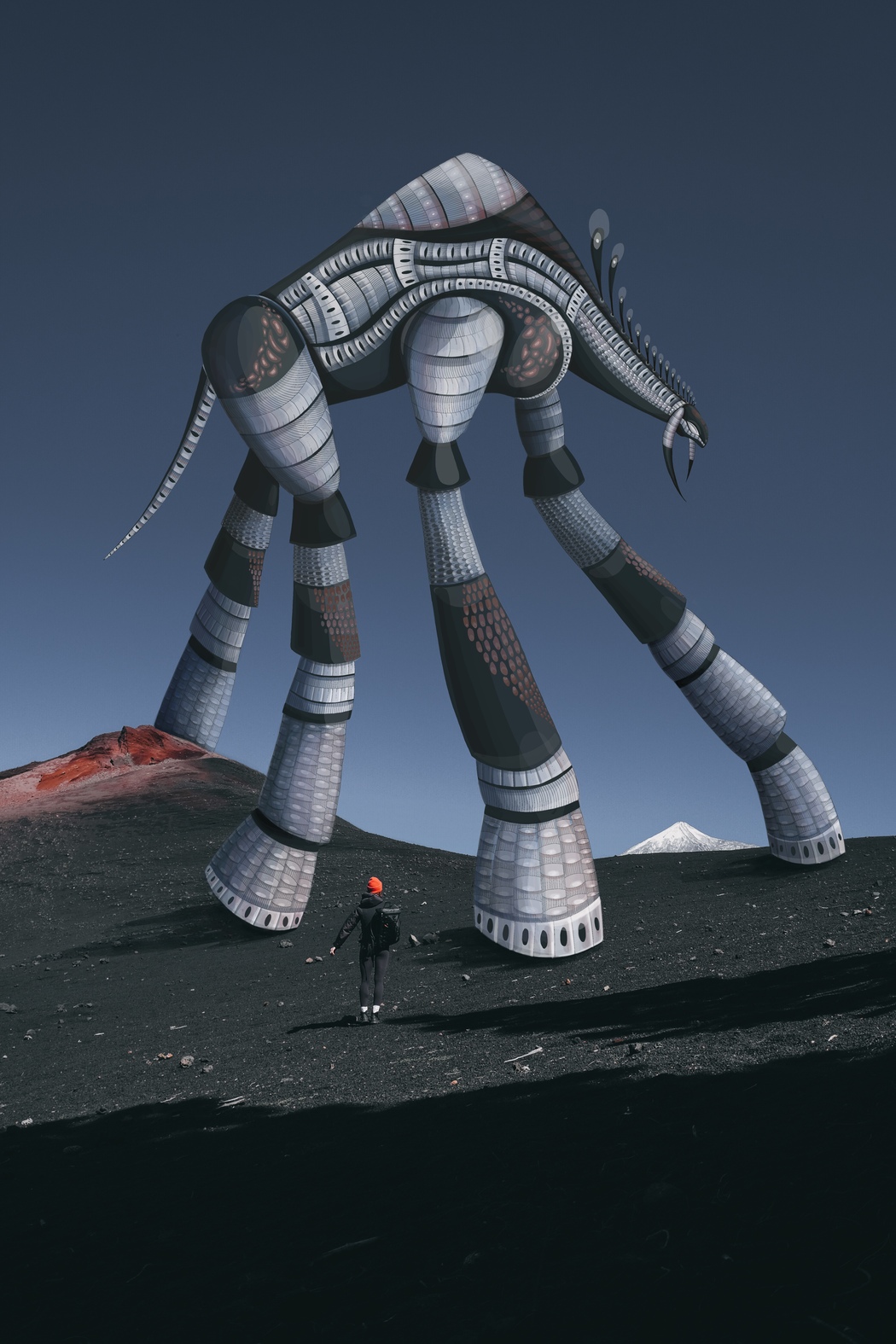 Kai Sebek | GAN GANDI | 2023
Kai Sebek | GAN GANDI | 2023
Nature seems to be a significant source of inspiration for you. What specific elements of the natural world do you find most inspiring, and how do they influence your work?
When I need inspiration, nature is the place I go to. Everything I’m looking for is there. I work with lots of structures in my work, and nature provides me with an inexhaustible source of these structures and fragments… There are a thousand micro worlds out there, and to be able to look into them whenever I need to is a great privilege.
I feel home there, so I try to spend as much of my free time as possible in nature.
You mention that you’ve often been told you live in your own world. How does this personal “world” manifest in the art you create?
Basically everything I create now comes somewhere from that childhood world of mine…
I want to capture this world and reworked it into fantastical stories, because that’s actually my reality. I believe that we can live in our childhood dream world as a grown up if we want, we just have to rediscover it. And those worlds can be all around us. You don’t have to travel to the end of the world to find it. Sometimes you can just go for a walk to the misty forest behind your house, let your imagination run wild and find yourself in a moment in the Rivendell from Lord of the Rings or in the landscape of one of the Ghibli stories. Simple as that. I am trying also to capture these moments.
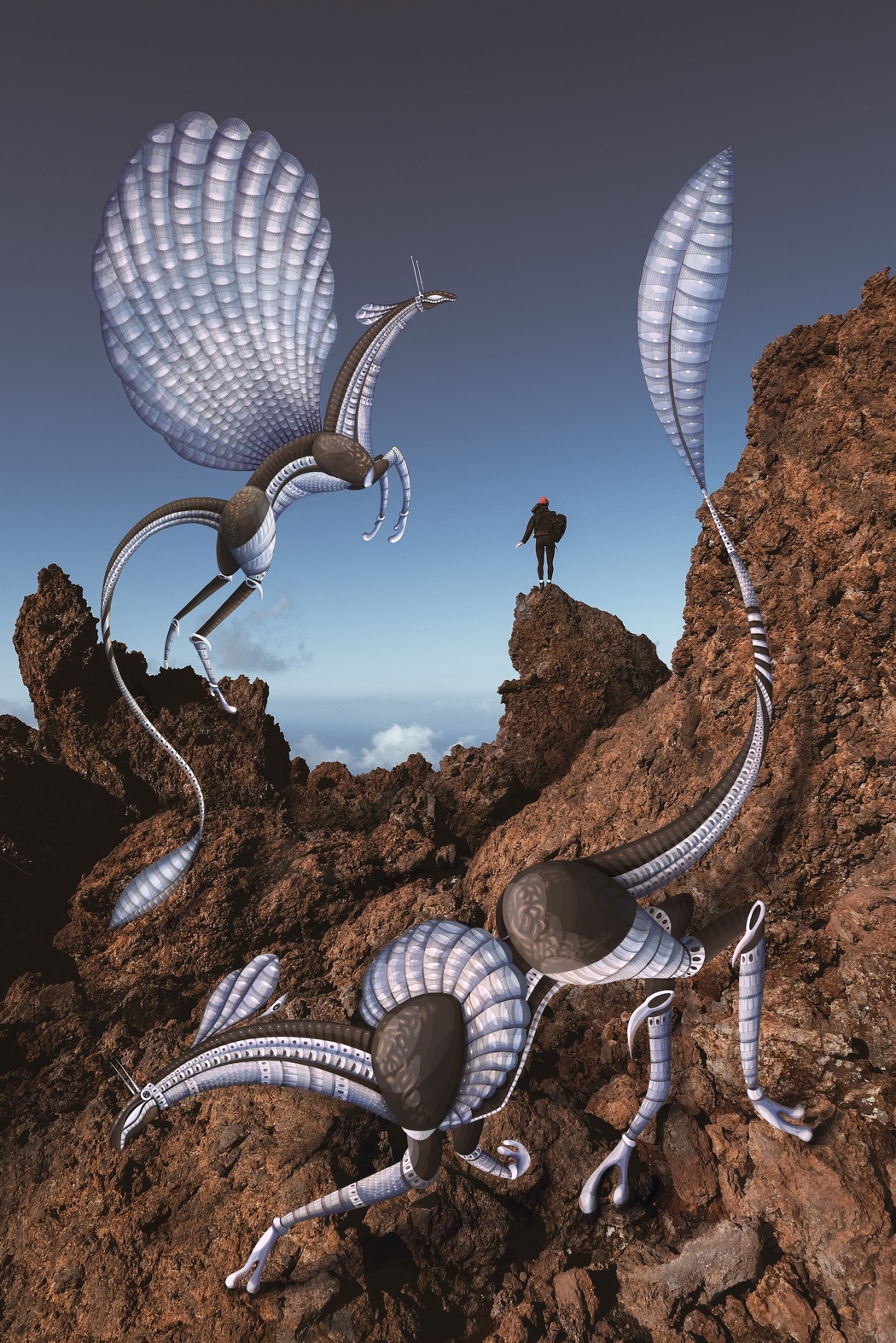 Kai Sebek | FLY WALKER | 2023
Kai Sebek | FLY WALKER | 2023
The project aims to evoke a sense of childhood wonder and respect for nature. What kind of message do you hope viewers take away from your work?
At first glance, it may seem that Woven Worlds are mainly dedicated to children, but the opposite is true. In most cases, children have not lost their imagination, have not suppressed it and have not let it be drowned out by the “real adult world” full of facts and rationality. They are only meant to encourage children to want to explore our world, to respect it and to play out stories far beyond the virtual world of computer screens. To become the protagonist in their own story and retain this sense of adventure into adulthood.
In adults, on the other hand, perhaps to reawaken that rationality-oppressed dreamer who once ran through the woods with a wooden sword and fought an imaginary enemy, came to first grade with a leashed dragon, and ran outside when the first snow fell to look for the tracks of ice giants.
Or something completely different, but I believe that the majority of us have had some sort of fantasy world as “safe place” at one time or another.
Woven Worlds are only meant to evoke these places, perhaps to make you smile when you remember your adventurous childhood. They are ment to stimulate the desire to experience something similar again and to implement it in a world full of clearly defined structures and conventions. Maybe even pack a backpack and go on an adventure of your own.
I believe that what amazes people can often naturally awaken in them not only respect, but also the desire to preserve that amazement. To become more sensitive to the places that amaze us and that our planet has to offer, and to start approaching them a little more like an explorer, a traveler and an adventurer of stories than a consumerist tourist.
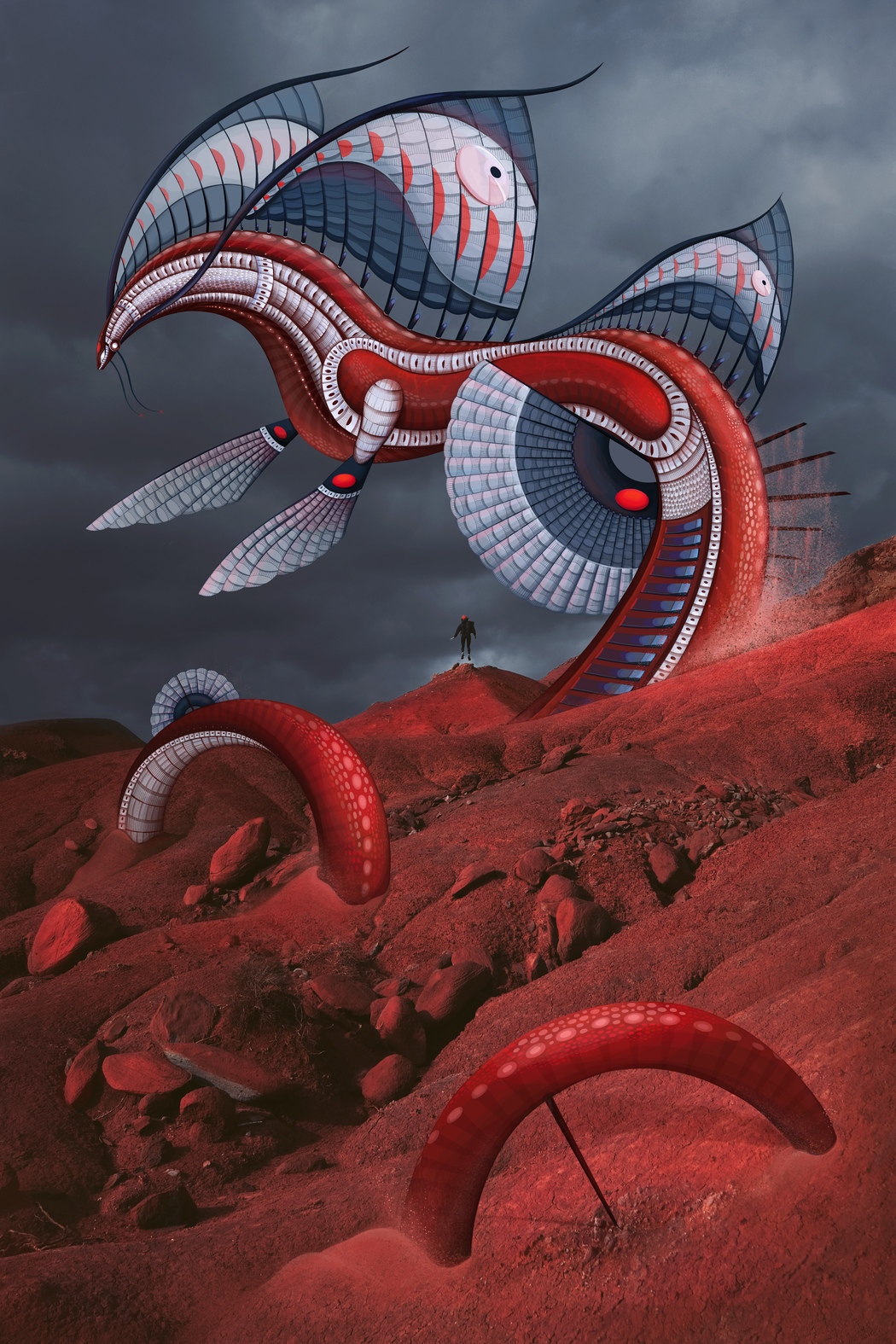 Kai Sebek | LAVATAJ | 2023
Kai Sebek | LAVATAJ | 2023
You’re embarking on a journey to the Arctic as part of an artist residency. What are you most excited to capture there, and how will it contribute to “Woven Worlds”?
My dream has always been the polar worlds. As a child I read probably every book that existed about polar expeditions and when I once saw a photo of a diver and a whale in the middle of the frozen ocean in NG magazine, I knew I wanted to be there one day to say hello to that creature. To trade places with the diver. I suspected that whatever I did in life, I would try to gradually work my way there. I was both touched and saddened by the photo, as the article had already been accompanied by an educational line about how these frozen worlds gradually melt away. That one picture affected me so much that I became obsessively interested in the issue of polar worlds and the beautiful giants that are part of our planet and yet look like something out of my childhood dream world. It has stayed with me and to this day I would remember that photo in every detail.
I believe in the power of visual storytelling. But in my work I don’t want to openly pressure people’s consciences or moralize about climate change. Thanks to a lot of amazing scientists, photographers or filmmakers, who are bringing real raw documentary from these lands, a lot of people already know what’s happening. At least those who want to know. It’s just that the world of glaciers is so distant to many that not everyone can imagine it, much less the impacts that may come when these worlds disappear. I live in the land of the four seasons, and permafrost is more science fiction than reality for most people here.
I want to capture the beauty and uniqueness of these worlds and complement it with a fictional story that playfully takes the viewer through this distant world full of ice and gentle giants. To grasp it from the other end and build the fantasy story of the Arctic on the pillars of real photographs, real stories, so that the viewer gradually recognizes at the end that the fantasy story is taking place here, in our reality.
I’d like to let people see the most remote parts of the world through the eyes of the explorer (a neutral figure with a red hat), and just as the little diver next to the whale once made me want to trade places with him, perhaps the traveler of the Woven Worlds will also make someone want to see into that world. Not necessarily physically, but often all it takes is that childlike enthusiasm for a unique landscape, a desire to learn more about a place.
I think fantasy is slowly disappearing from this very rational world, just like icebergs, and I believe that through it even the saddest stories can be conveyed in a more easily digestible form.
Knowledge is the greatest power, and this is my way of trying to help to spread awareness of the beauty of the worlds we have so far. That’s what Woven Worlds is all about.
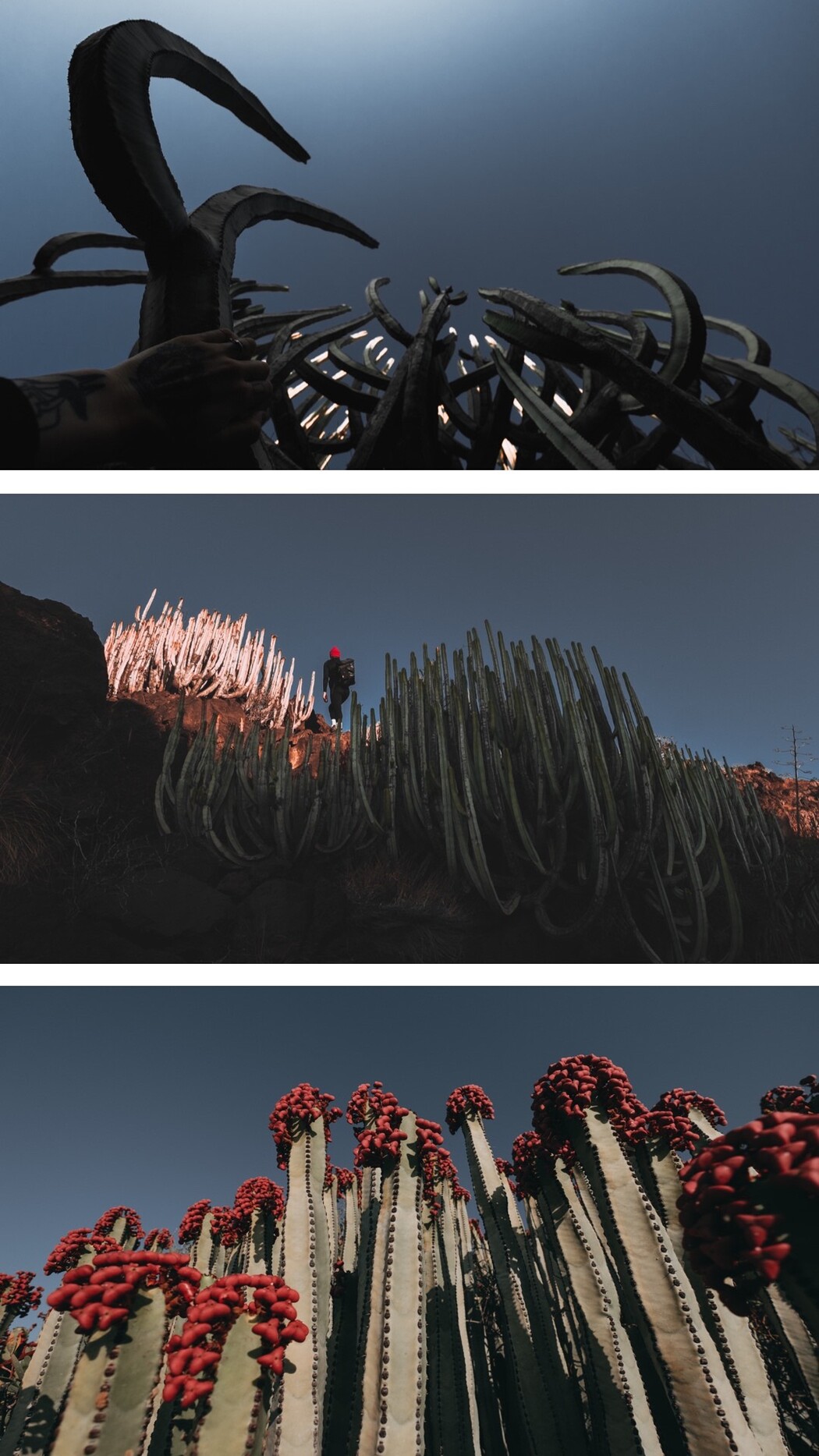 Kai Sebek | DESERT STEPE
Kai Sebek | DESERT STEPE
How do you balance the line between reality and fantasy in your work? Do you find one more challenging or rewarding to depict?
Mostly not at all haha. In my inner world this line often overlaps, sometimes it doesn’t exist and everything I create is done pretty much automatically. When I go to photograph something, I rarely have a strict plan. I know where I’m going, but I want to be surprised by what I’ll be able to capture. That’s the game. Who ends up in the illustration often depends on what I capture. Nothing is predetermined and so no boundary is drawn. I don’t outright plan, and equally I want everyone in my work to find that boundary for themselves. For some, what I create may be pure fantasy, while others may be more in search of those elements of reality. I want to give people the freedom to interpret my work in their own way, because everyone who sees into Woven Worlds is meant to play a starring role in it and be their own hero.
What role do you think art can play in raising awareness about environmental issues, particularly with projects like yours that emphasize nature?
Huge. I believe that art has the ability to interpret complex science in a way that can be understood by a broader spectrum of observers. For example, a photograph of the same melting glacier taken at a different time can express the facts in numbers and graphs quite clearly. Visuals have the power to serve as proof of science. And getting that evidence to the widest possible group of people is what can ultimately be the main driver of change.
Awareness.

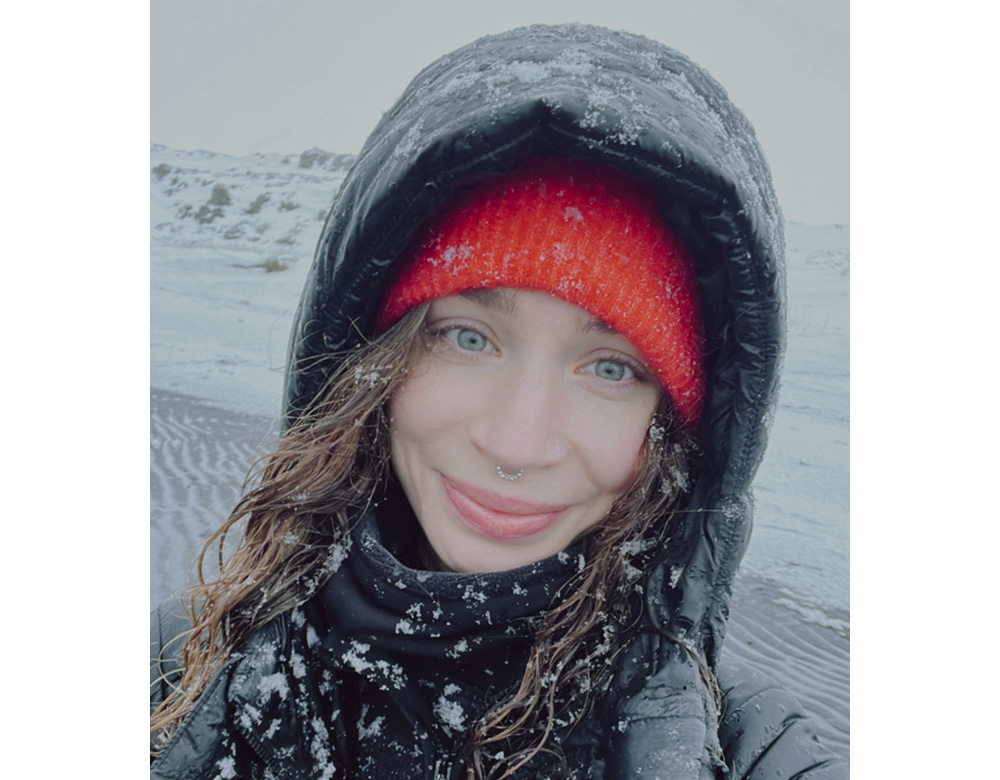
Leave a Reply
You must be logged in to post a comment.